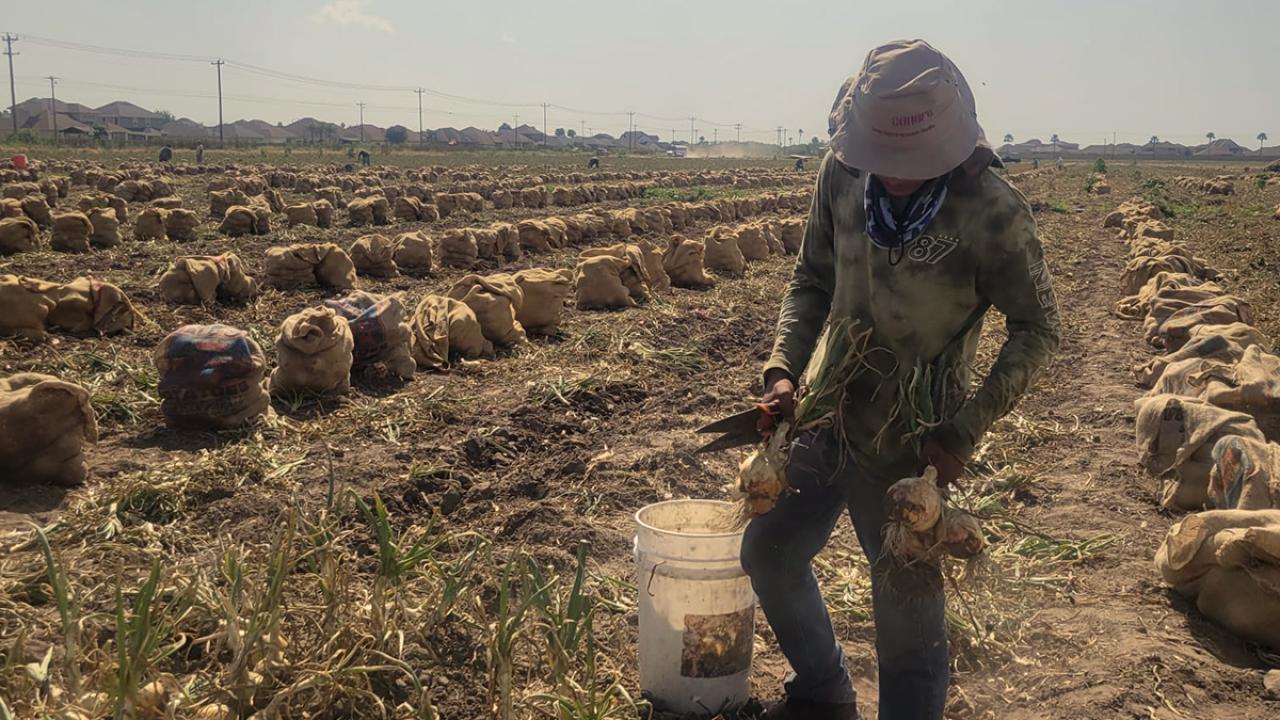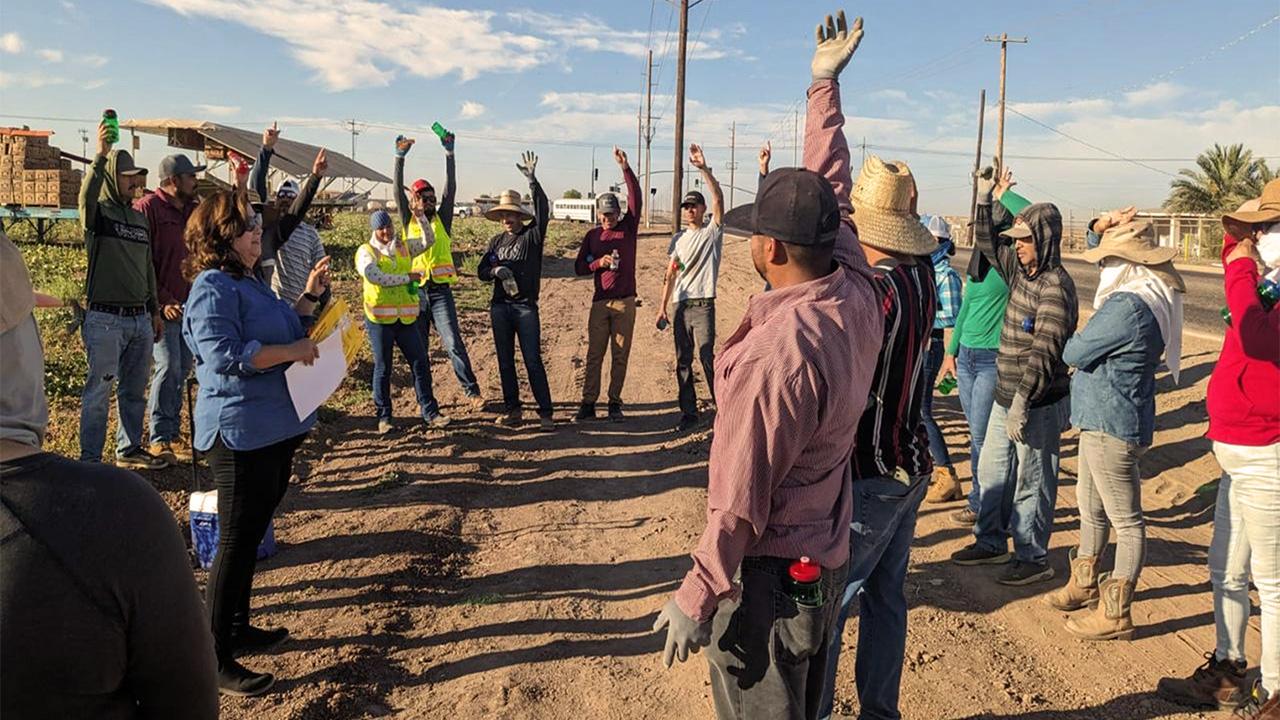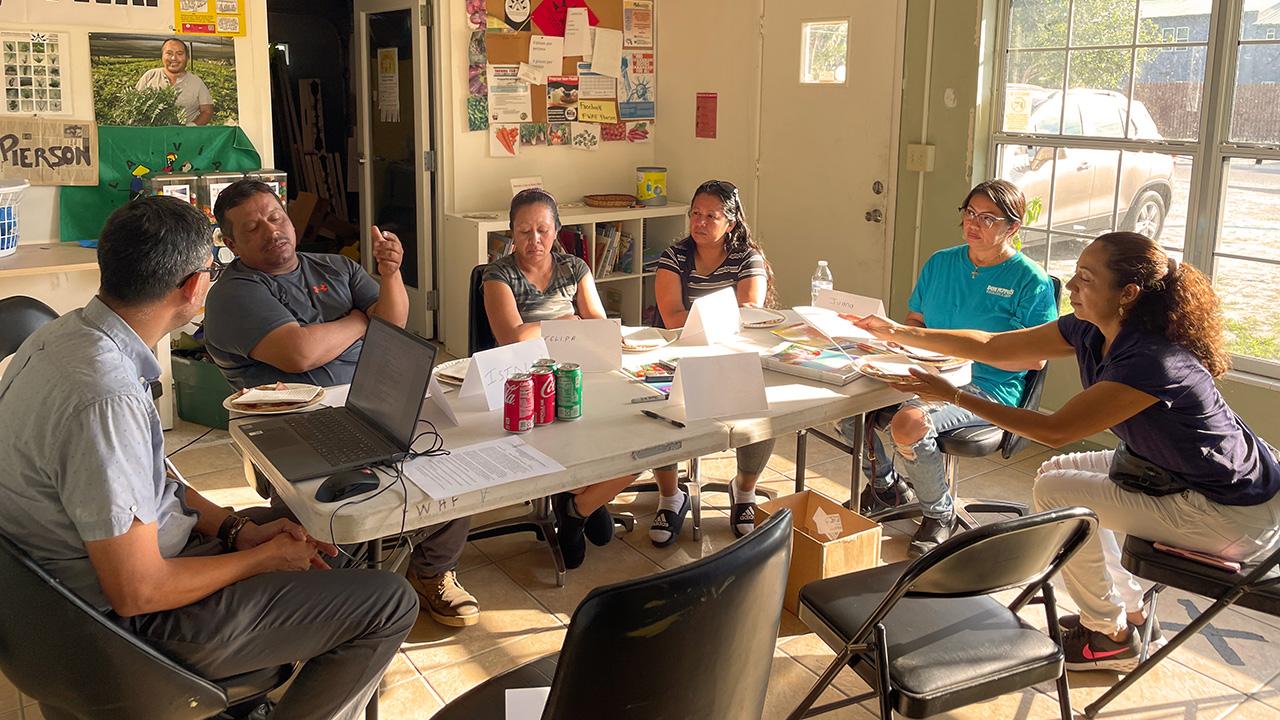
Empowering Voices, Protecting Lives
PERC-Funded Projects Lead the Way in Farmworker Pesticide Safety
Across America’s fields and orchards, farmworkers form the backbone of our nation’s food supply. Yet many face daily risks from pesticide exposure—risks that are compounded when safety information is inaccessible or delivered in unfamiliar languages. The Pesticide Educational Resources Collaborative (PERC), led by UC Davis Continuing and Professional Education in collaboration with Oregon State University and funded by a five-year cooperative agreement from the U.S. EPA., continues to close that gap by supporting community-based projects that make pesticide safety education more inclusive, accessible and effective.
In 2025, three PERC-funded Agricultural Community-Based Projects (AgCBPs) achieved major milestones—developing innovative training resources, expanding outreach through trusted community networks and ensuring that language is never a barrier to safety.
Breaking Barriers with Indigenous-Language Safety Videos
In a historic first, PERC, in collaboration with the National Center for Farmworker Health (NCFH), released the nation’s first EPA-approved pesticide safety training videos in Indigenous languages—Mixteco, Tsotsil and Tseltal. Supported by a $145,000 PERC grant, this project addresses a critical gap for Mesoamerican Indigenous farmworkers who often only speak their native pre-Hispanic indigenous languages—a vital yet underserved segment of the U.S. agricultural workforce.
Developed in collaboration with the Mixteco/Indígena Community Organizing Project (MICOP), the videos, which meet Worker Protection Standard (WPS) training requirements in most states, were developed through farmworker focus groups to ensure cultural and linguistic authenticity. For many participants, it was the first time they had received pesticide safety education in their native language. Many also noted that because of the training videos, they learned new knowledge about how to safely handle pesticides. As one farmworker who participated in the focus group reflected, “I had not had the opportunity to have someone share a video like this with me.”
NCFH’s Director of Research and Public Health Programs, Bethany Boggess Alcauter acknowledging the project’s milestone in protecting farmworker communities. “Thanks to PERC’s support and our partnership with MICOP, we have made significant strides in addressing the linguistic and cultural needs of Indigenous farmworkers, ensuring they have the tools to reduce pesticide exposure risks.”
These videos will now be used by NCFH as part of a comprehensive training program for Indigenous farmworker communities. By bridging language and culture, this project expands NCFH’s reach and reduces the risks of exposure for farmworkers and their families.
From Airwaves to Agriculture: Radio, Stories and Community Reach in Yuma

In Yuma County, Arizona—one of the nation’s agricultural hubs—Campesinos Sin Fronteras (CSF) completed its two-year Campesinos Pesticide Safety Training and Education Program, funded by a $125,000 PERC AgCBP grant. Building on the foundation from year one of the grant, the project expanded its reach dramatically, training more than 600 Spanish-speaking farmworkers and pesticide applicators and reached thousands more through bi-lingual educational materials, radio, social media and in-person outreach.
Tailored to the needs and schedules of agricultural workers, outreach included early morning field visits, community-based events and one-on-one education using visual and bilingual materials, including an EPA-approved flipchart and a newly created fotonovela. The fotonovela—a photo-based story booklet—proved especially powerful for families and workers with limited literacy.
“I can’t read,” said one participant. “But I can understand the story from the drawings.” Another participant added that the big, colorful images were easy to remember.
CSF’s outreach also extended across airwaves through Radio Sin Fronteras (KYMZ 99.9 FM), broadcasting more than 3,000 pesticide safety public service announcements, and reaching over 21,000 people on social media.
“Campesinos Sin Fronteras has shown what’s possible when you combine collaboration and creativity with trusted community partners,” said PERC Project Coordinator Emily Ripken. “Their dedication to culturally relevant, engaging education helped create something deeply effective.”
Strengthening the WPS Toolchest for the 21st-Century Farmworker

In Florida, the Farmworker Association of Florida (FWAF) took on the challenge of making complex pesticide safety concepts understandable for workers across five agricultural regions. With a $100,000 PERC grant, FWAF created a series of culturally relevant telenovela-style videos that help farmworkers better understand complex areas of the WPS. Guided by community input, the project was designed to make pesticide safety more accessible and actionable for workers in the field.
The project trained more than 300 farmworkers across five Florida communities and engaged focus groups to guide every stage of development. “We knew from the beginning that the message had to come in a format farmworkers could relate to,” said FWAF’s Pesticide Safety Coordinator, Jeannie Economos. “That meant visuals, storytelling and real-life examples.”
The videos have since been distributed to more than 10 partner organizations nationwide, including United Farm Workers (UFW) and Alianza Nacional de Campesinas, extending their reach beyond Florida and amplifying their national impact.
“FWAF’s project took on complex topics and made them digestible,” noted Ripken. “This is exactly the kind of community-driven innovation we hoped to support.”
A Growing Movement for Safer, Healthier Communities
These three projects—spanning farmworker communities across the nation—represent the heart of PERC’s mission: to strengthen pesticide safety through community leadership, cultural relevance and equitable access to education.
Through its Agricultural Community-Based Projects program, PERC empowers local organizations to develop tools that speak the languages, respect the cultures and address the realities of America’s agricultural workforce.
“Each of these projects demonstrates how effective education and collaboration can improve safety outcomes,” said PERC Director Suzanne Forsyth. “Pesticide safety is not only about meeting regulations—it’s about ensuring the health and well-being of farmworkers and their communities.”
Learn more about PERC and view the resources created through these projects.
This article was kickstarted by AI and handcrafted to completion by the marketing staff at UC Davis Continuing and Professional Education, who are responsible for the final product. By combining technology and human expertise, the article is accurate, engaging (at least we hope you think so!) and written efficiently.
